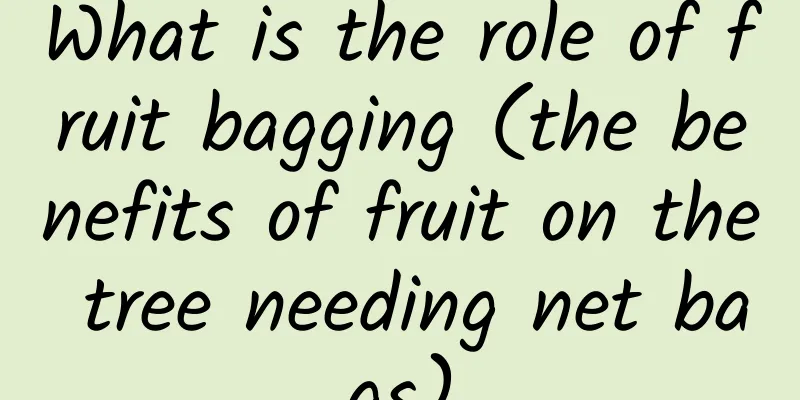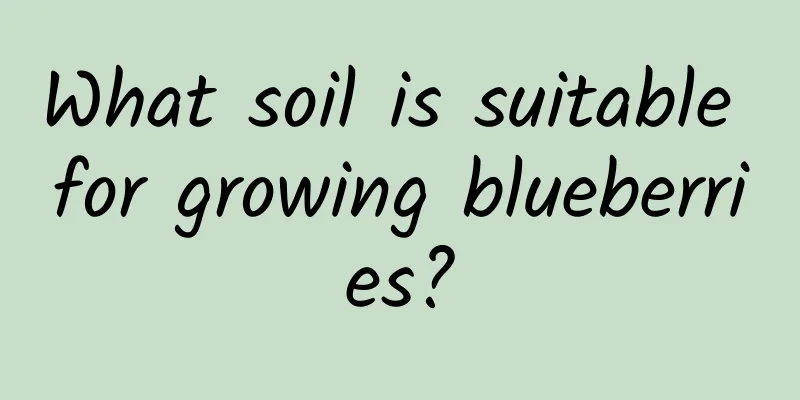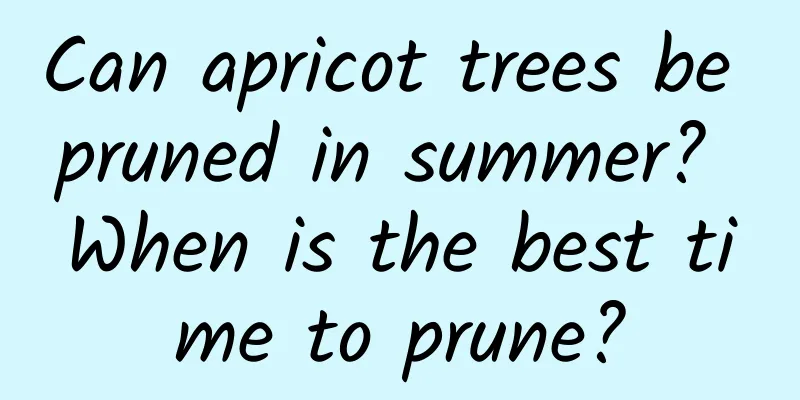What is the role of fruit bagging (the benefits of fruit on the tree needing net bags)

|
Fruit bagging is a very common operation method with many advantages. It can ultimately improve the quality of fruits, increase yields, and increase farmers' income . Specifically, the main functions of fruit bagging are as follows. Advantages and functions of fruit bagging1. Reduce pesticide residues . After bagging, the fruits are isolated from the outside world, and the fruits will not be contaminated when spraying pesticides and fertilizers. 2. Improve the quality of the fruit . After the fruit is bagged, the growth of the fruit is not affected by the external environment, so the quality is better. 3. Reduce the risk of pests . Bagging fruits can prevent the invasion of most pests. 4. Reduce the impact of natural disasters . After bagging, rainy weather, strong sunlight and other natural weather conditions will not affect the fruit. Taking grape bagging as an example, its advantages include : ① Improve the smoothness of the fruit surface ②Reduce fruit diseases and pests ③ Improve fruit coloring ④Reduce the number of times pesticides are used ⑤Reduce pesticide residues in fruits ⑥Reduce bird damage How to bag fruit1. Bagging should be done on a sunny day . 2. Before bagging, remove the excess leaves on the fruit stalk or base of the bunch. 3. Before bagging, spray the fruit all over with insecticides and fungicides allowed for use in pollution-free food. Wait until the liquid medicine dries before bagging. The fruit that was sprayed should be bagged on the same day. 4. Bananas are bagged 15-20 days after buds break. Longan and litchi are bagged after fruit thinning. Pears and peaches are bagged about 30 days after flowering. Mangoes are bagged 45-60 days before harvest. Loquats are bagged about 30 days after flowering, after fruit thinning and fruit set. Grapefruit and tangerines are bagged from mid-May to early June. Fertilizer and water management after fruit baggingIn bagged orchards, fertilizer and water management and leaf protection should be strengthened to maintain long-lasting and healthy tree growth and meet the needs of fruit growth. Since the calcium content in the fruit of bag cultivation decreases, it is easy to suffer from bitter pit disease, etc., so spray 300-500 times of amino acid calcium or ammonia calcium or amino acid compound micro-fertilizer once a month from July to September. Spray 500 10-6 rare earth once in late June, 40 days and 20 days before harvest, or spray photosynthetic micro-fertilizer, Nongjiawang and other micro-fertilizers in June, July and one month before harvest to increase the soluble solids content of bagged fruits. During the fruit expansion period and before removing the bags, the fruit should be watered thoroughly to meet the water needs of the bagged fruits and prevent them from getting wet. |
Recommend
Four methods of propagating summer sweet
The sowing propagation method of summer plum The ...
Why are the leaves of Monstera turning yellow?
1. Soil compaction Monstera is suitable for growi...
What flowers can be watered with fermented milk? The correct way to water flowers
Fermented milk watering effect Fermented milk can...
Can purple spiderwort be grown hydroponically?
1. Is it possible? It is also called purple bambo...
How to grow bougainvillea
1. Maintenance methods 1. Watering: When growing ...
Can oleander be planted in the yard?
Can I grow oleander in my yard? Oleander can be p...
How to grow green radish quickly in hydroponics
1. Change water in time The water for hydroponic ...
What are the benefits of eating wolfberry?
1. Delaying Aging Wolfberry contains vitamin C an...
How to water spider plants
1. Watering methods in four seasons 1. Spring and...
How to grow tulips
Planting method Soil Preparation Tulips prefer sa...
The clod of earth in our countryside has blossomed and become popular all over the world. The flowers are bigger than our faces!
This Van Gogh float can be said to be the most sh...
How to grow purple jasmine
1. Maintenance methods 1. Temperature: It likes h...
Does the Venus Flytrap prefer shade or sun?
Does the Venus Flytrap prefer shade or sun? The V...
How to grow mint? Mint planting method
1. Leveling the Land Mint should generally be pla...
How to make rose toothpick seedlings grow quickly and how to survive the winter
1. How to make rose toothpick seedlings grow quic...









